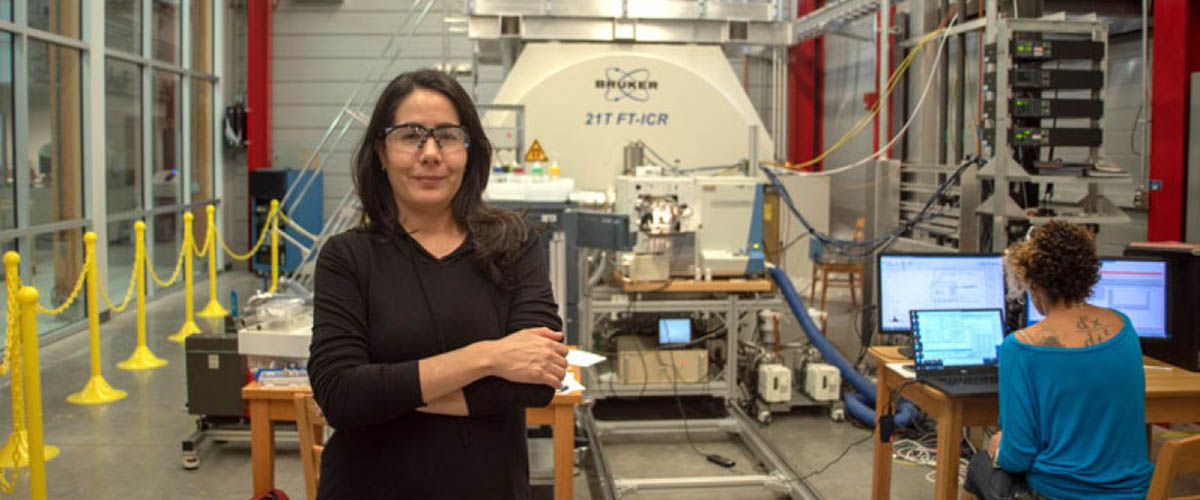Spinning straw into gold? Bottling nature's genies? Discovering materials with Superman powers? Sure enough. It's all in a day's work at the Magnet Lab, where scientists seek new sources of green energy as well as novel ways to store it.
"There's a tremendous need for clean energy today," said physicist and Magnet Lab director Greg Boebinger. "But as soon as you start talking about renewable sources like the wind and the sun, the big issue becomes storage.
"When the sun shines, you collect its energy. When the wind blows, you collect its energy. But then you have to find a way to store the energy until you need it days or months later. Many scientists who visit the MagLab are working on that problem."
Analytical chemists, including assistant scholar-scientist Amy McKenna, are also investigating how to conserve oil supplies by manufacturing new liquid fuels. Their goal, simply put, is to spin straw into gold.
"We want to take agricultural waste, stuff that would be thrown away or mulched or composted," McKenna said, "and turn it into fuel."
Other scientists, such as Los Alamos National Laboratory physicist Albert Migliori, want to create an artificial fuel that burns more cleanly than petroleum by using the energy of the sun and wind to run a chemical reaction. If Migliori and others can find a way to bottle these potent genies, the discovery could radically increase our ability to convert nature's own power into something we can use instead of oil.
Physicists and engineers are also on the prowl for Superman materials known as superconductors: metals, alloys and ceramics that allow electricity to flow with no resistance or loss of energy. Finding the right superconducting material could make our current power grid much more efficient. It could even open up energy avenues we haven't yet imagined.
The search for "unobtainium"
In the popular sci-fi movie "Avatar," an Earth company traveled at great expense to an alien planet to mine its "unobtainium." This fictional ore was Hollywood's depiction of the holy grail of superconductors: a material able to conduct staggering amounts of electricity without resistance and energy loss. That's not the case with today's national power grid.
"We waste 10 percent of our power heating up the power lines," Boebinger said. "If we could find a way to transmit electrical energy without doing that, we would realize a huge savings."
Our country's energy grid operates much like your kitchen toaster. Both have wires that heat up as electricity flows through them. Electrons cause the heat as they zoom through the wires, bumping into other electrons and atoms. These atomic collisions cause friction, and that friction generates heat. In your toaster, the red-hot wires nicely brown your bread. In our energy grid, the wires' heat just toasts the air and is wasted.
But that's not how superconducting wires work. In superconductors, the electrons flow without collisions. Scientists already use superconducting materials to transmit energy — but there's one big catch. In order for them to work, today's superconductors must be kept super cold, as in minus 347 degrees Fahrenheit and even colder! To keep superconductors that cold, they're bathed in liquid helium, the coldest liquid on earth. It's a complicated, costly process that takes up a huge amount of space.






